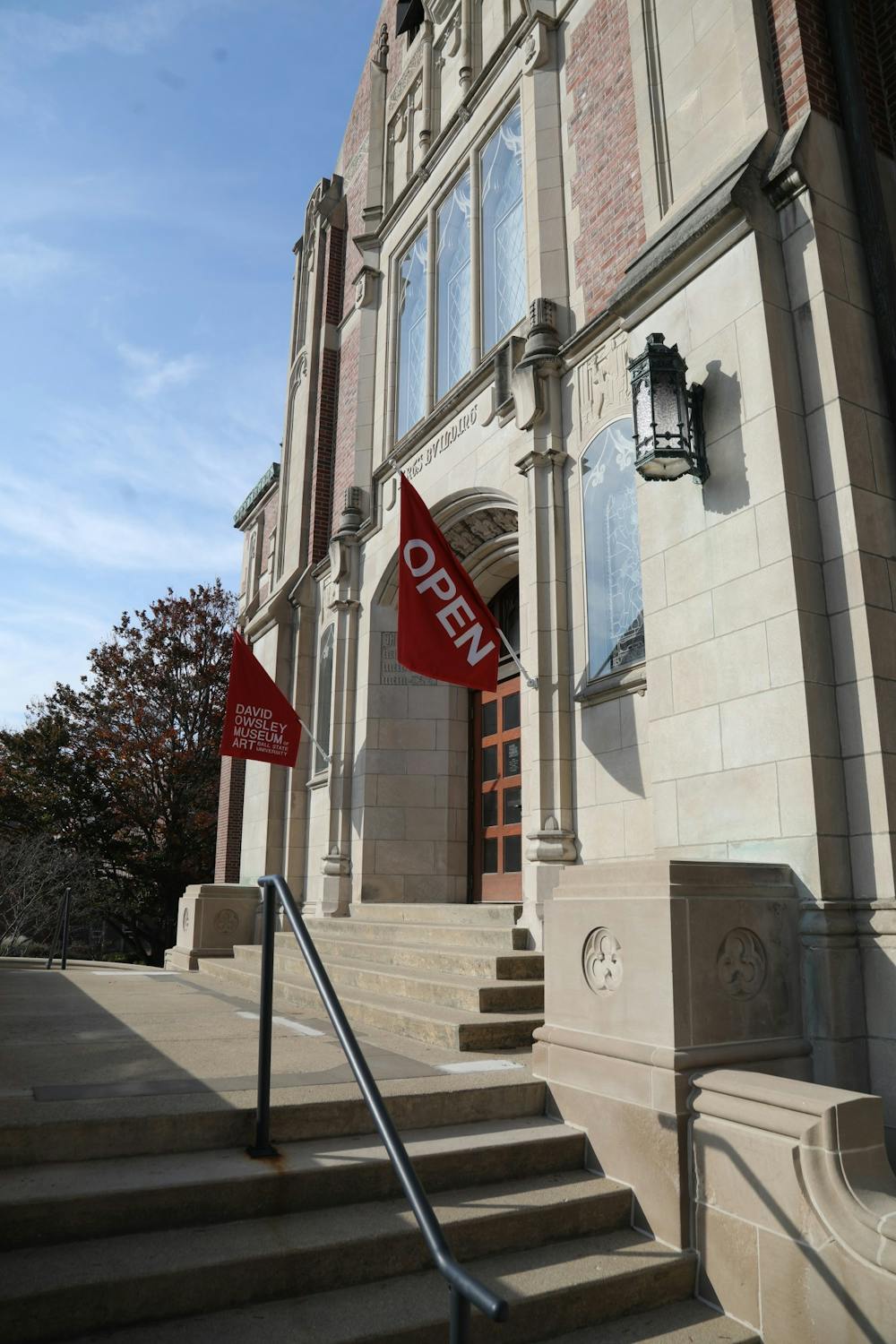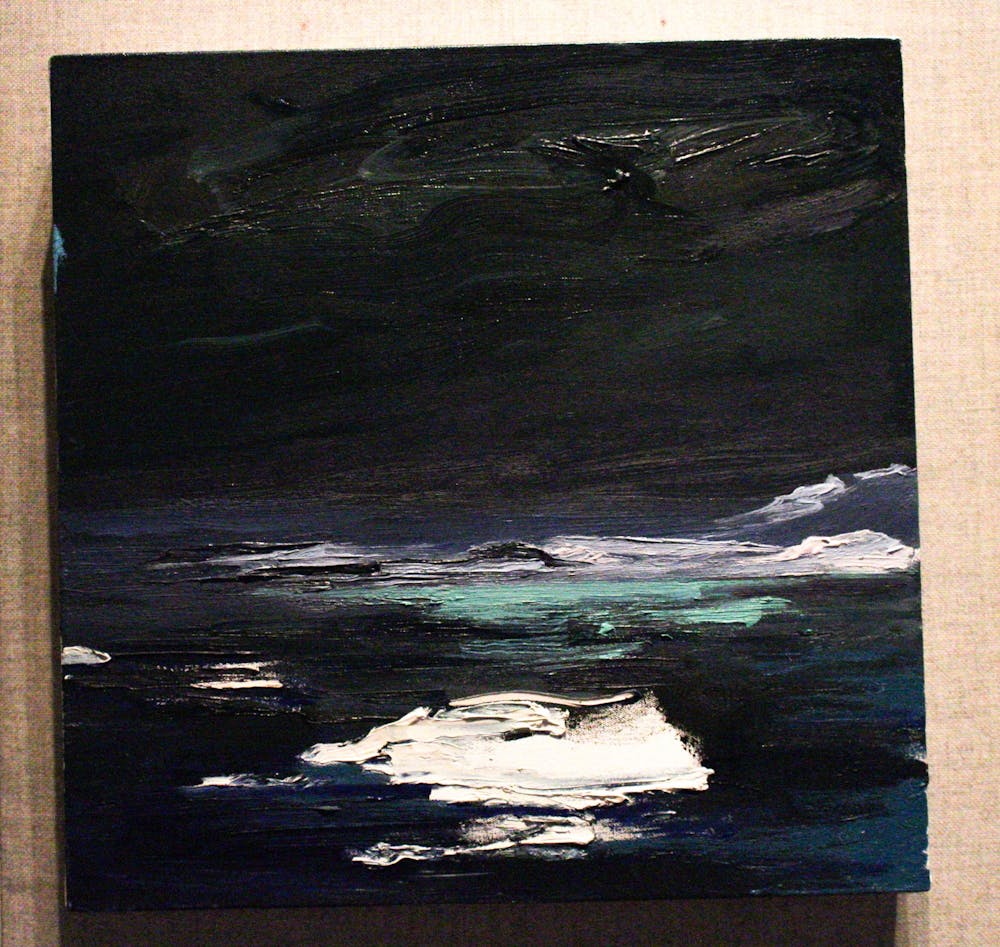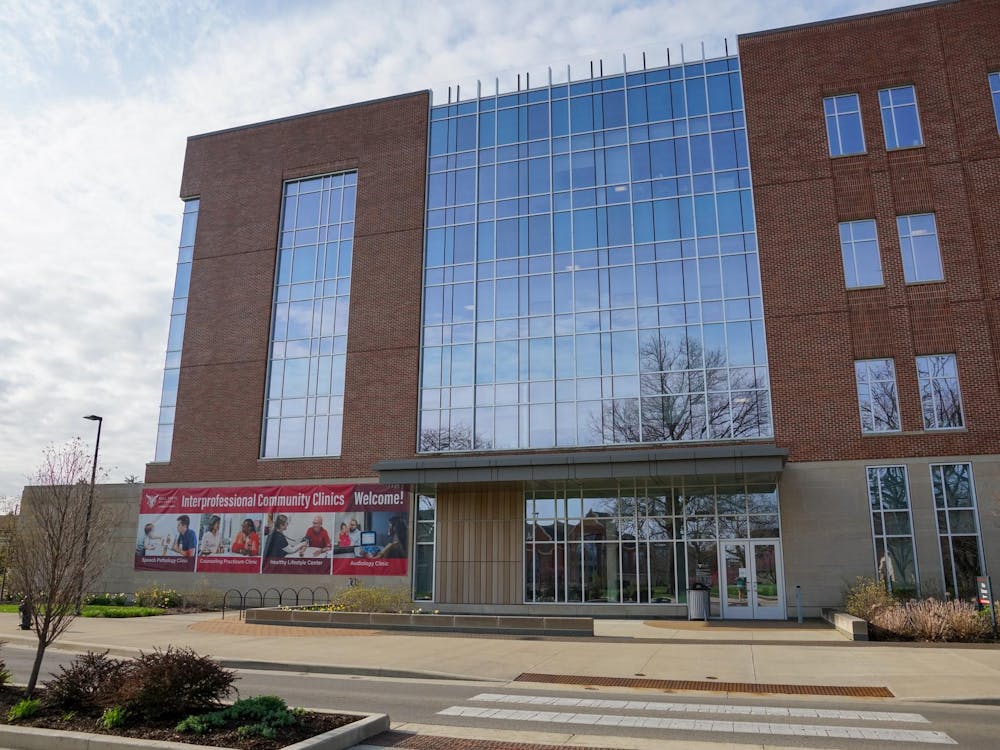The David Owsley Museum of Art (DOMA) has assembled an exhibit of recent loans and acquisitions running from Sept. 29 - Dec. 22, featuring a piece by artist and activist Diane Burko, an artist of more than 50 years.
Burko said she considers herself a “political animal” and has a lot of passions when it comes to social and political change, including beginning last century, anti-war, a feminist and a climate change activist in this century, while still holding an interest in the former.
Beginning in 2006, Burko gained an interest in climate change. As a landscape artist, it felt like a no-brainer.
“For the first time as an activist, I have to say … this cause, this issue, is something that I’ve been able to fold into my art practice,” Burko said.
This passion for climate change is what struck museum director Robert La France.
“She had a very important exhibition at American University in Washington, D.C., last year, which is where I saw some of these works,” La France said. “We really fell in love with her work and her passion about climate change.”
There are many effects of climate change, many of which can be seen today. Burko highlights one in particular, rising ocean levels and melting glaciers, in her piece in the museum. Dr. Amy Gregg, associate professor of environment, geology and natural resources at Ball State University, explains the science behind the issue.
“Not only is the atmosphere warming, but the oceans are warming, which then can release more carbon dioxide into the atmosphere,” Gregg said. “As the oceans are warming, the ice caps and glaciers are melting, which raises the level of the ocean.”
Burko, while always aware in some capacity of these issues, began implementing them in her work around 2006, understanding something had to be done.
“It sort of all came together for me, and I realized if indeed I’m someone who is out in nature and appreciates the awe-inspiring, amazing world out there and the natural landscape, I realized that it was being threatened, and I figured I had to do something about it,” Burko said.

The entrance of the David Owsley Museum of Art Nov. 2 in Muncie, Ind. Alex Bracken, DN
One way Burko uses her art for activism is to utilize audience engagement and her own voice to talk about the issues. In fact, she makes a requirement whenever she is in any kind of exhibition for public engagement. Her exhibit at Ball State is no different, as she came on Oct. 13 for a public lecture.
“I’m always requiring a panel or a public lecture or exchange with the university, especially if it’s a university gallery or a museum,” Burko said. “I don't want to just speak to art students, I want to reach the general academic audience to discuss these issues that are existential and present in our lives.”
Through these talks, she is able to discuss in-depth the issues her art is about, bringing awareness to those who attend and view her pieces. Her passion shows in the way she explains the climate crisis.
“You could drop dead from it, and you might do that sooner rather than later if we don’t take responsibility for all the CO2 that has been poured into our atmosphere since the Industrial Revolution started in the 1750s,” Burko said. “Any sane human being at this point in time, I think, is aware that something’s going on here.”
This awareness is something to be implemented in the lives of the public, which is what many activists are pushing towards.
“Transportation alternatives would be a big one,” Gregg said. “Putting pressure on Congress for more energy efficient technologies, investing in alternatives to fossil fuels, supporting local food movements so that not all of our food has to be shipped from California … that’s a lot of carbon impact. The things that we buy as consumers relate to the use of materials and the production of greenhouse gasses and fossil fuels.”
Burko’s piece at the DOMA is from 2013 and is one of many of her pieces that focuses on climate change.
“I have been able to visit and bear witness to these issues that are affecting us …” Burko said. “I’m now painting about the Amazon rainforest in South America … I’m working on getting there to, again, bear witness. That’s what they’re about. They’re about bearing witness, and that’s the link to my project in terms of climate change.”
Contact Madelyn Bracken with comments via email @madelyn.bracken@bsu.edu.





